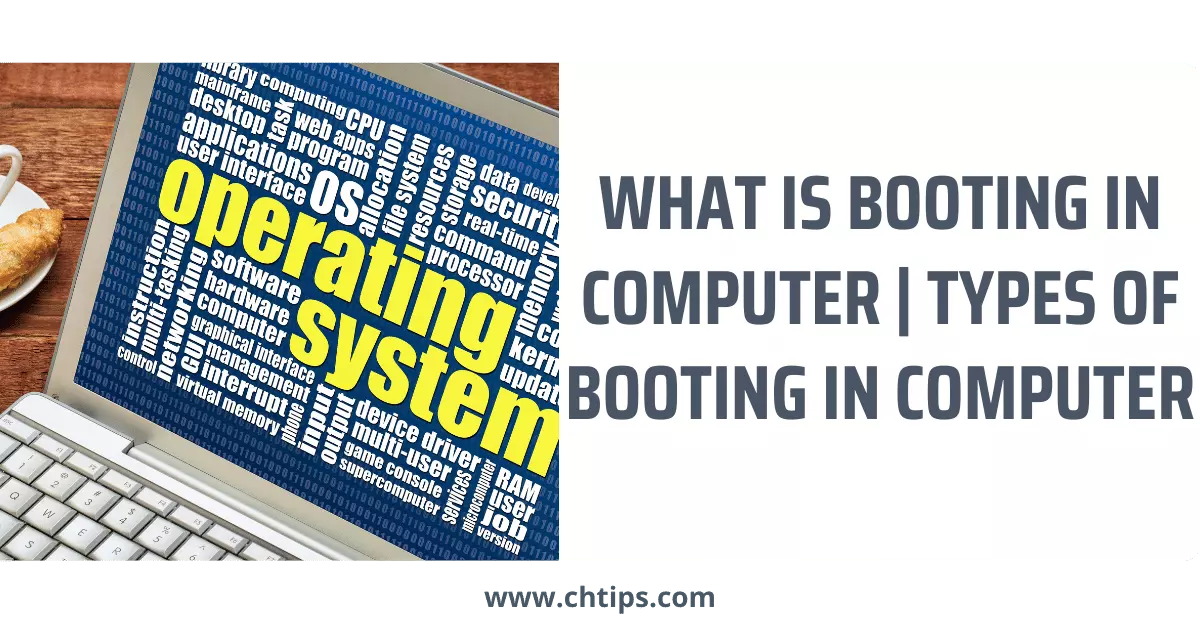In this computer era computer use is made almost mandatory because the modern computer possesses some amazing features which are unmatched.
They can complete any task given to them with lightning speed and with almost 100% accuracy.
Every computer has a bootup process which is executed when there is a power on.
This boot process remains the same with size, capacity, generations, and classifications.
The term Boot is derived from a famous proverb that says “pulling yourself up by your bootstraps” and hence it is also called as a bootstrap process.
In this article, we are going to learn and discuss what is booting in computer with different types of booting in computer system.
So let’s start.
What is Booting in Computer?
The booting process of computer can be explained in simple words.
This booting process of a computer starts with a POWER ON within a few seconds our monitors display the operating system the process which is executed between the POWER ON and loading of an operating system is called as Booting process of computer.
In this process of computer booting system checks each and every software and hardware whether they are functioning properly or not if found any error it refuses to load the operating system.
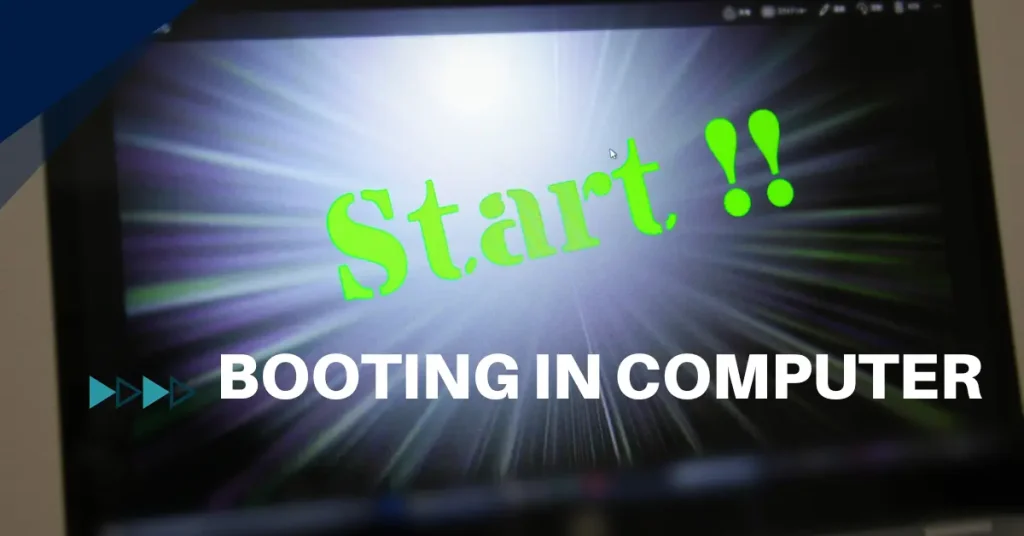
When the computer system is fully loaded the user can execute any command to operate the system because the operating system [OS] is responsible for handling and organizing the computer system for further process and functionality.
When the process of booting is undergoing computer system checks every connected device like Hard Disk, RAM, BIOS, Motherboard, and CPU, and later loads the operating system to RAM.
This process hardly takes a few seconds these days thanks to high-speed CPUs and RAMs.
If any issue occurs during the boot process our system warns and prompts us with an error message which can be viewed on computer screen.
People Are Also Reading
- What is Block Diagram of Computer System
- What are the Main Characteristics of Computer
- Classifications of Computer
- The Five Generations of Computer
- 20 Advantages and Disadvantages of Mobile Phones
- 10 Limitations of Computer System
- 10 Uses of Computer in Different Fields
- 10 Uses of Multimedia in Various Fields
- Types of Secondary Memory in Computer
- Characteristics of Fourth Generations of Computer
- Differences Between Impact and Non-Impact Printers
- Advantages and Disadvantages of Thermal Power Plant
- Applications of SMPS in Power Supply
- Essential Attributes of Good Software
- What is Cabinet in Computer
- What are the Hard Copy Output Devices
- What is Reliability in Computer
- What is Accuracy in Computer
- How Do Computers Works at the Most Basic Level
Complete Booting Process of Computer Step By Step
- The process when computer checks all the hardware devices attached to it is called as POST [Power on Self-Test].
- When user starts their computer system, the CPU checks itself, which is triggered by clock ticks generated by the system clock.
- The CPU initialization is to look at the system’s ROM BIOS.
- The ROM BIOS stores the first instructions, these instructions are responsible to run the power-on self-test (POST), in a predetermined memory address.
- POST begins by checking the BIOS chip and then tests RAM [Random Access Memory].
- If POST finds CMOS [Complementary metal oxide semiconductor] battery error BIOS [Basic Input Output System] display an error message like CMOS CHECKSUM ERROR on the screen and later it continues to initialize the Central Processing Unit [CPU].
- The process later checks the hardware devices (sound card, display, or VGA), secondary storage devices, such as hard drives and floppy drives, zip drives, ports, and other hardware peripheral devices, such as the keyboard and mouse.
- When the POST comes to conclusion that all the components and parts are working properly its handover the process to the CPU.
- Then BIOS Looks to load operating systems like (Dos, Win XP, Win 7, Win 8, and Win10).
- Then BIOS tells the CMOS chip to find the operating system on the hard disk …The majority of the computer Operating System [OS] is installed on C: Drive.
Different Types of Booting in Computer Systems
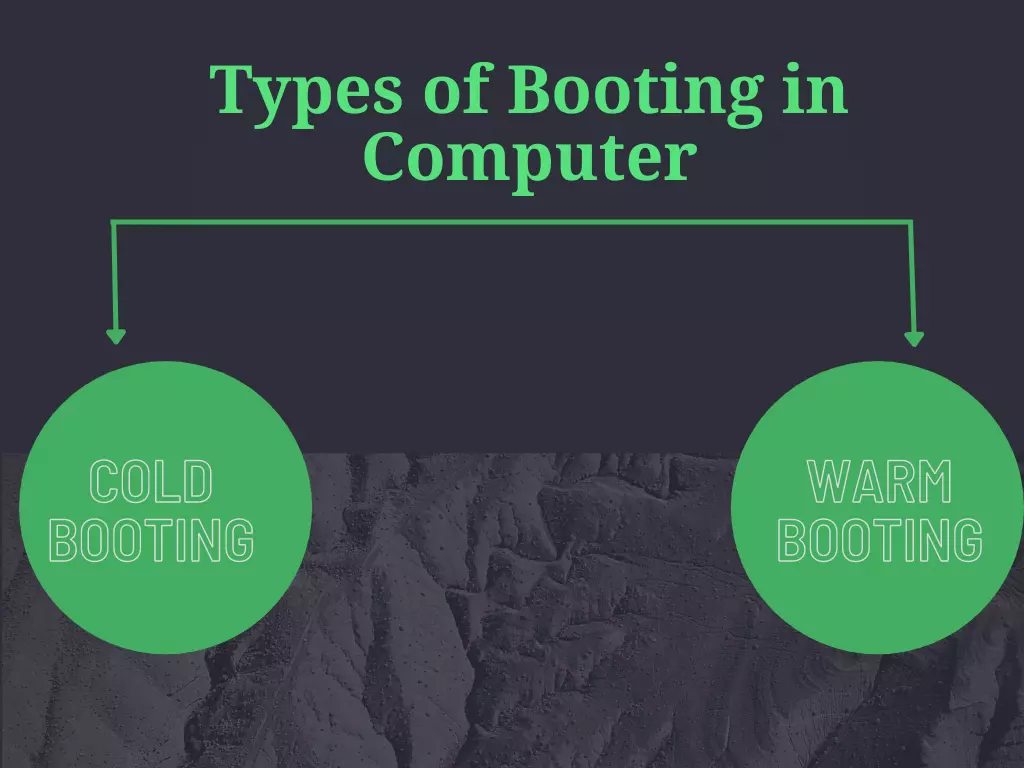
There are mainly two types of computer booting.
- Cold Booting or Soft Booting
- Warm Booting or Hard Booting
1. Cold Booting or Soft Booting
Cold Booting is a process when the user starts their computer normally like switching on from the power socket and hitting the power button of the CPU [Central Processing Unit].
This is the initial process to start the computer without pressing any keys from keyboards or playing with the mouse.
This process performs standard TURN OFF and TURNS ON of the operating system.
2. Warm Booting or Hard Booting
Warm booting or hard booting is a process where the user deliberately restarts the computer system when the system freezes or hangs or stops responding to instructions and commands given to them.
This usually happens to computer systems and we are required to restart our system by pressing the reset button on the CPU or by pressing the CTRL+ALT+DEL combination keys from the keyboard.
You May Also Like Reading
- Impact of Social Media on Students Life
- Advantages and Disadvantages of Hard Disk Drives
- Top 20 Advantages of Internet in Points
- Advantages and Disadvantages of CDs and DVDs
- Top 10 Advantages and Disadvantages of Computer
- Advantages and Disadvantages of Fifth Generations of Computer System
- Learn Computer Fundamentals
- Computer Basic Tutorials
Useful Video On : What is Booting in Computer | Types of Booting in Computer
Difference Between Cold Booting and Warm Booting
| Cold Booting | Warm Booting |
| Cold Booting is Usually called Hard Booting. | Warm Booting is also called Soft Booting. |
| Cold Booting is a natural process to start a computer. | Warm Booting is a process where the user deliberately restarts the computer |
| In the cold boot, temporary memory is cleared. | In Warm boot, temporary memory is not cleared. |
| To perform cold boot user has to press the POWER ON button from the CPU. | To Perform a warm boot user has to press CTRL+ALT+DEL or RESET key from the CPU. |
| Cold Booting is a Slow process. | Warm Booting is a comparatively faster process compared to Cold booting. |
| Power on Self Test [POST] is executed in cold booting. | POST is omitted. |
| The process is done regularly. | This process is done occasionally. |
| Doesn’t affect application software and system software. | Application software and system software can get corrupt. |
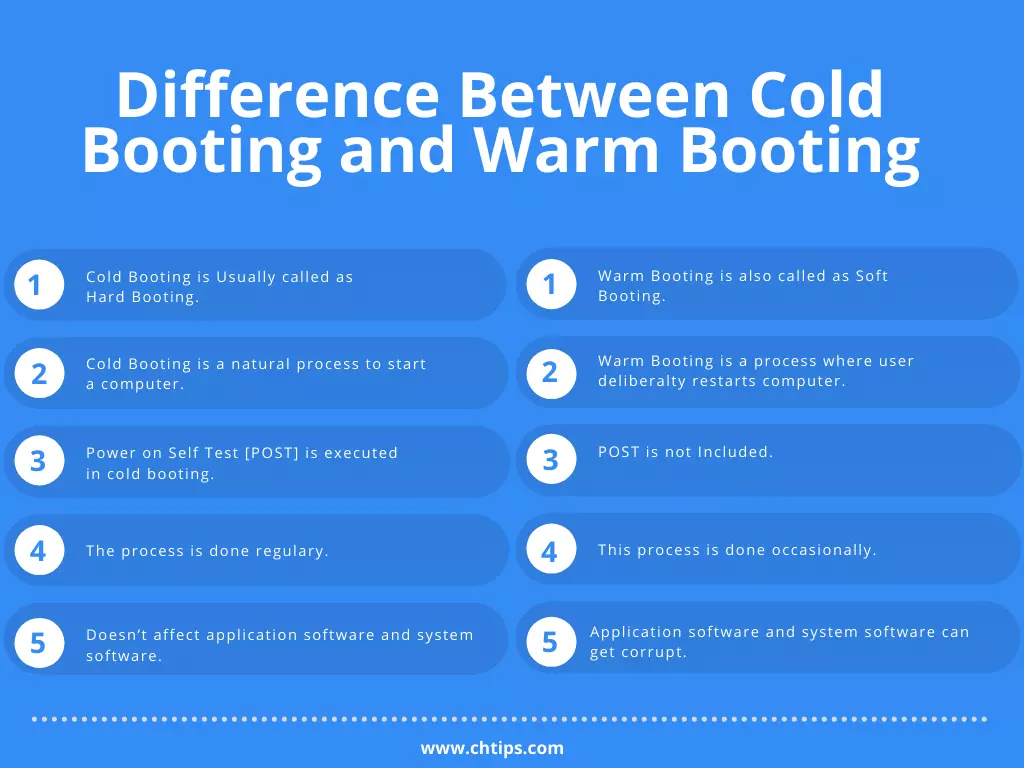
4 Advantages of Booting
- Booting is important to prevent the operating system from getting crash.
- External storage mediums are very helpful in repairing operating systems.
- Bootable media installs an operating system on computer hard disk drives.
- Bootable media are also used and utilized in creating partitioned harddisks.
What are the Advantages of Multi Booting?
| 1. | Allows users to select which operating system to boot from. |
| 2. | If one operating system is corrupted computer can start with the help of another OS. |
| 3. | Use of software and application despite system configuration and operating system requirement, as multiple options are present. |
| 4. | Better and Enhanced Performance. |
| 5. | Simple to install and use. |
Which Button is Used for Booting?
There are various keyboard keys that are used and utilized in the booting process of any computer system is mentioned below.
- F12
- Del
- F2
- F10
How to open BIOS?
BIOS Stands for Basic Input Output System.
Step 1 :: Plug Your Pen drive In One Of the USB Slot Which are Present In The Case / Cabinet. You must have a bootable pen drive.
Step 2 :: Go to CMOS Setup / Bios Configuration By Continuous Pressing DEL Key From Keyboard Some common Keys are F1, F2, F10, F12.
Tip :: Go To Your Manual And Find Which key to Hit to Go to CMOS Setup …Sometimes It can be seen while the Computer starts at the Bottom of The Screen)
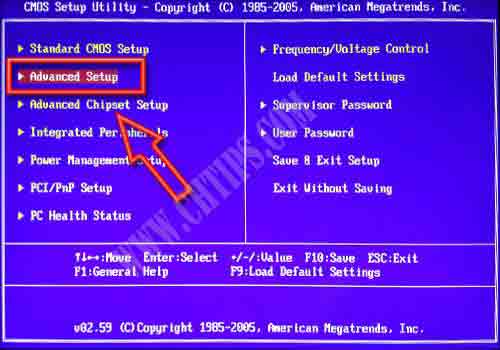
Functions of BIOS [Basic Input Output Devices]
- BIOS checks the computer setting.
- BIOS loads essential drivers.
- BIOS cleans all CPU registers.
- BIOS initialized & checks all hardware devices
- Starts the process called “POST” [ Power On Self Test ].
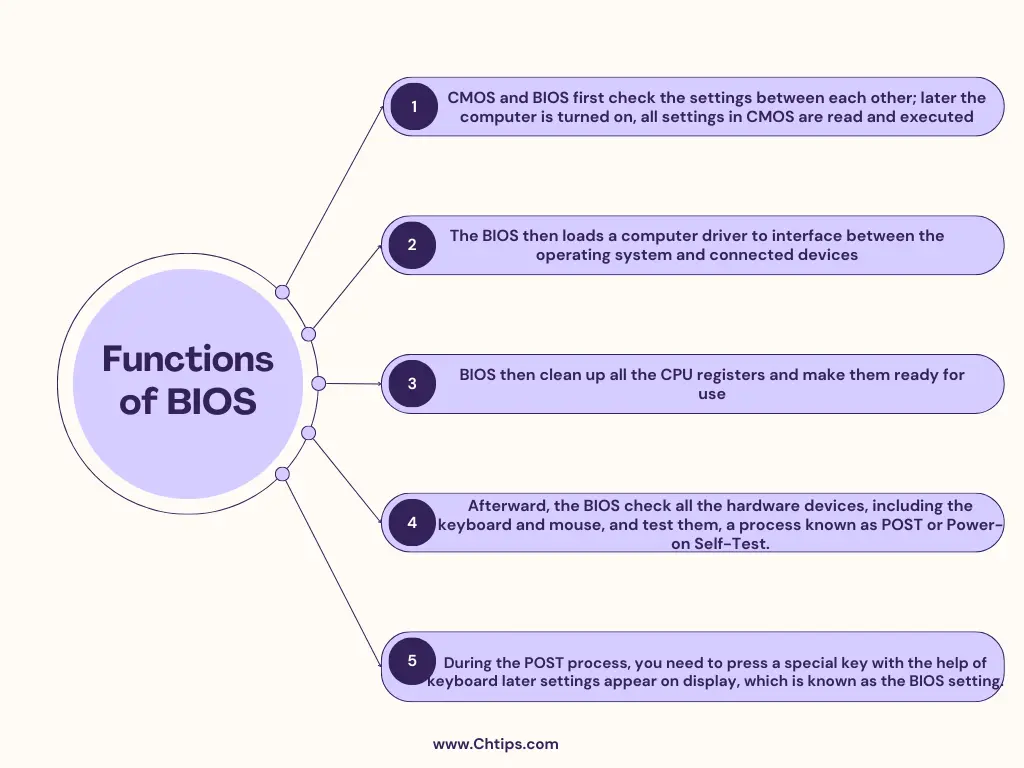
Popular BIOS Manufacturer
| 1 | American Megatrends (AMI) |
| 2 | Asus. |
| 3 | BYOSOFT. |
| 4 | Dell. |
| 5 | Foxconn. |
| 6 | Hewlett Packard (HP) |
Frequently Asked Questions [FAQs]
What Can Booting Do?
Booting is an important startup process where POST [Power on Self-Test] checks every hardware device attached and warns if any error is found.
This is also a good technique to identify any issues related to computer systems.
Usually, primary memory errors are easy to diagnose with power on self-test.
The common memory error is “Physical Memory Dumped”.
What is Booting and its type?
Booting is a process where a computer system starts itself in a sequential manner which is applicable to all systems based on size, capacity, generations, and speed.
Usually, the time required to boot a computer system hugely depends on the speed of hardware devices attached to them like CPU, RAM, and Motherboard with cache memories.
There are 2 types of booting
Cold Booting
Warm Booting
What are the Booting Devices?
The storage devices that contain system file that is necessary to start the computer system or boot are called “Booting Devices”.
Some Examples of Booting Devices are
Hard Disk Drives.
Pen Drives.
SSD.
Floppy Disk [Obsolete].
CD or DVD
Which is the Boot Key?
F8
What Does CMOS Stand for?
Complementary Metal Oxide Conductor.
Get In Touch
Every operating system present nowadays has a common booting process.
Yes, of course, the time required to complete the boot process may depend on certain factors like the size of the operating system, machine configuration, and hardware functionality.
Usually, the time is very low and needs to be worried but if your system takes a huge time to boot you must pay attention to the boot process and take the help of a professional to fix the problem.
I have also written and compiled some articles on computers and telecommunications please go through them.
I hope you will like reading it.
I hope that all the questions and queries related to what is Booting in Computer and 2 Types of Booting in Computer system have been answered here.
If you have any questions related to types of booting in computer.
Please feel to contact me and also if you need to add or remove something from the article which I may have forgotten to do so, please feel free to chat with me in the comment section.
Share this article with your friends and colleagues this motivates me to write more on related topics.
!!! Thank You !!!
